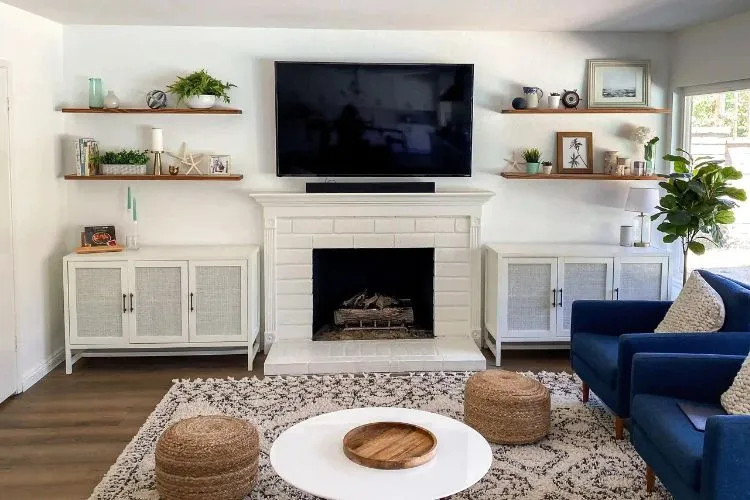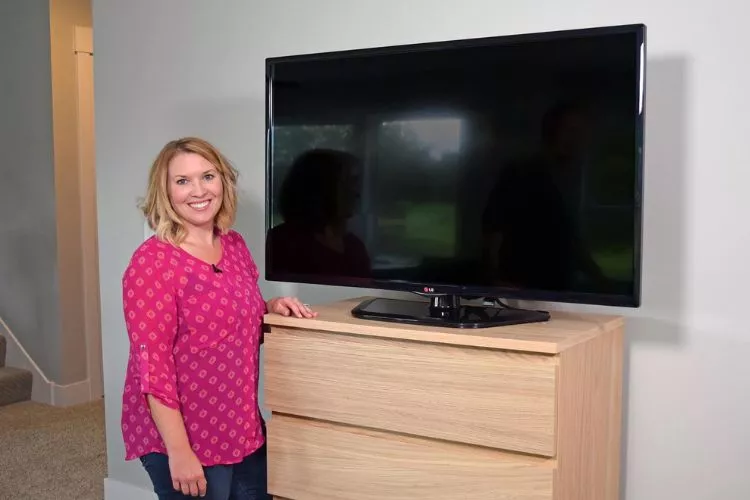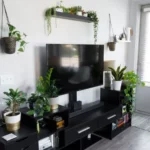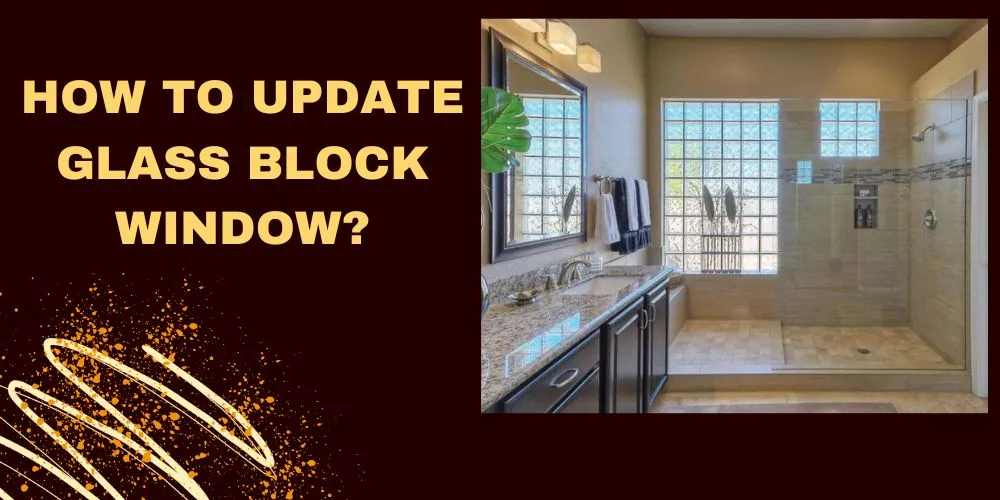The question of accommodating a TV on a floating shelf has become a popular topic, given the prevalence of modern, minimalist designs.
As households seek to optimize their living spaces, mounting televisions on walls and floating shelves presents an attractive, space-saving alternative to traditional TV stands.
So, can you put a tv on a floating shelf?
Honestly the answer is not as straightforward as one might assume. It involves considering several crucial factors ranging from the floating shelf’s weight capacity to the size and weight of the television.

In this article, we dissect the prospect of placing your TV on a floating shelf – the pros, cons, safety measures, and insightful recommendations for best practices.
Buckle up as we explore whether this trendy design solution is suitable for your electronic centerpiece.
Can you put a tv on a floating shelf?
Yes, you can place a TV on a floating shelf, but it’s crucial to adhere to certain parameters. The shelf’s strength, weight capacity, and size should be able to adequately support the TV’s weight and dimensions.
Most floating shelves come with a specified maximum load capacity and many aren’t designed to handle the weight of a larger television set. It’s also important to attach the shelf securely to wall studs or use appropriate wall anchors if mounting directly to drywall.
Safety must be prioritized as a falling TV can potentially cause harm or damage. Therefore, although it is possible to put a TV on a floating shelf, it’s recommended to consult a professional or thoroughly research your individual situation to ensure secure installation.
Important Factors to Consider When Mounting a TV on a Floating Shelf

- TV Weight and Size: This is the first step. You need to know the weight and size of your TV. It is essential as it affects the balance and capability of the floating shelf. TVs vary in weight and size. Ensure the TV matches the shelf capacity.
- Shelf Weight Capacity: This points to the weight a shelf can hold. It is given in the shelf manual. Understanding this can help prevent undue pressure on the shelf. If the shelf’s weight capacity is less than your TV weight, a fall can happen. Always match the TV weight to the shelf capacity.
- Wall Type: This refers to the makeup of your wall. Different walls can handle different weights. There are two main types, stud and hollow walls. Stud walls can withstand more weight. Hollow walls need sturdy anchors for weight support. A shelf that is not secure can drop, causing damage or harm.
- Space Requirements: This is about the space around the TV and the shelf. It’s not just about fitting the TV on the shelf. Space around has a role too. There should be enough space for cables and ventilation. This helps prevent any overheating problems.
- Viewing Angle: This refers to the angle of watching TV. It is key for a good viewing experience. The rule of thumb is eye level from your viewing spot. Too high or low can cause discomfort. Correct placement enhances your TV watching experience.
In all elements, safety and comfort remain the focus. Achieving this mix of components can present a challenge. But careful thought and planning can ensure safe and efficient results. This can provide a pleasing aesthetic and a good TV viewing experience.
Safety Precautions When Installing a TV on a Floating Shelf
Safety Measures for Installing a TV on a Floating Shelf: Keep your home secure for kids and pets.

- Sturdy Shelf Installation: Check the shelf’s security by assessing its position on the wall. It should be stable and safely hold your TV. A loose shelf can fall. Always secure the shelf to wall studs or use strong anchors for hollow walls.
- Proper Use of Mounting Hardware: The hardware you use matters. It should match the weight of the TV and the capacity of the shelf. Never ignore or compromise on this aspect. Use the right hardware to help prevent accidents.
- Childproofing Measures: Kids can be curious and often touch things. Ensure that they cannot reach the TV or shelf. Place the TV out of a child’s reach. Adding childproof locks on TV cabinets can help too.
- Securing Cables: Loose cables can be hazardous. They can be a tripping risk, or kids might pull them causing an accident. Ensure cables are neatly organized and secured. Cable management systems are helpful for this.
- Maintaining Ventilation: Proper ventilation is key for the TV and other devices. Heat buildup can cause devices to fail or lead to fires. Leave enough space around the TV for airflow, and keep other heat-generating items at a distance.
- Educating Kids and Pets: It’s important to make children and pets aware of the risks. Teach kids not to climb or pull on the shelf or TV. Similarly, keep pets away to prevent them from causing accidents.
By being mindful of these safety precautions, you can maintain a beautiful and safe home environment. With attention to detail and proper care, placing a TV on a floating shelf can be a success.
frequently asked questions (FAQs)
How high should floating TV shelf be?
Answer: The ideal height for a floating TV shelf greatly depends on the room configuration, seating height, and your personal comfort. Generally, the center of the TV screen should be at eye level, which is roughly 42 inches from the floor for an average viewer sitting on a standard couch. However, it’s important to measure your own seating arrangements and adjust accordingly. To find the perfect height, sit comfortably and ensure a natural line of sight to the middle of the screen, without any neck strain.
How high is too high for floating shelves?

Answer: Floating shelves can be installed at various heights depending on the purpose, room layout, and personal preferences. In general, a floating shelf is too high if it’s difficult to reach items without strain, or if the objects on the shelf aren’t easily visible. Functionality and aesthetics are important factors in determining the right height. For common-use items, a height between 16 to 20 inches above a desk or countertop works well. Decorative shelves can sit higher, at around 60 inches or more from the ground, display items while maintaining accessibility.
How much weight can my floating shelf hold?
Answer: The weight capacity of a floating shelf depends on various factors like the shelf material, its thickness, mounting hardware, and wall type. Stronger materials such as solid wood or metal can hold more weight than materials like MDF or particleboard.
Heavy-duty brackets and strong wall anchors also play a role in determining the overall weight capacity. A typical floating shelf can support between 30 to 75 pounds distributed evenly. It’s crucial to consult the manufacturer’s guidelines and follow proper installation procedures to avoid overloading and potential damage.
Conclusion:
Installing a TV on a floating shelf can be a superb space-saving solution and create a sleek, modern aesthetic. However, careful planning and consideration are required. You must ensure the floating shelf and its installation can handle the weight and size of the TV.
It’s also critical to adhere to the right positional ergonomics – typically keeping the center of the screen at eye level. For any doubts concerning shelf material, bracket strength, or weight capacity, it’s recommended to consult a professional.
By ensuring these elements, you can enjoy a safe and comfortable viewing experience with your TV placed on a floating shelf.


